Having the right type of flowering tree in your yard can give the scenery a major uplift.
Flowering trees are a perfect means of adding fragrance and color when landscaping. However, what these types of trees offer goes beyond aesthetics. Some of them may afford you privacy in your outdoor space.
However, one must understand the intricacies of a tree before choosing it. You should know when it blossoms, the growing zone, and how tall it gets.
In this article, we will discuss different types of trees with pink flowers. We will also find out when they bloom and what zones they grow in.
Table of Contents
1. Magnolia

The Magnolia tree of the Magnoliaceae plant family is known for its white and large pink flowers.
When Magnolias blossom in springtime, they produce beautiful white, red, mauve, and pink flowers.
The flowers of a Magnolia tree are big and have a nice fragrance. They are usually saucer or cup-shaped depending on the tree species, and they blossom before the leaves appear.
Magnolia petals are 12 inches across with some varieties measuring around 4 inches.
These trees can grow as high as 40 feet. For a small garden, the dwarf variety, which is about 12 feet tall, is recommended.
Magnolias are found in USDA growing zones 4-9. Many deciduous Magnolia trees are frost tolerant.
2. Flowering Cherry Trees

Flowering Cherry trees, or Sakura as they are commonly called in Japan, are known for their elegant white and light pink flowers produced in spring.
Most cherry trees are kept for their elegant floral display and not their fruits.
Like the Magnolias, the flowers of Cherry trees appear in spring before the leaves.
The 5 petals of this flower are ruffled, creating showy clusters. When viewed from a distance, this tree looks like it is covered in candy floss.
The flowers of the Sakura tree have a short life span.
The petals begin to fall after 2-3 weeks. However, planting several cherry trees with different bloom periods can help increase the flowering periods.
The Kojo-No-Mai variety can reach a height of about 7 feet and blossoms in early spring, producing light pink flowers.
Flowering cherry trees are found in USDA growing zones 4-9. Flowering Cherry Trees are cold tolerant to about 0 degrees. But below that, they may suffer some damage.
3. Eastern Redbud (American Redbud)
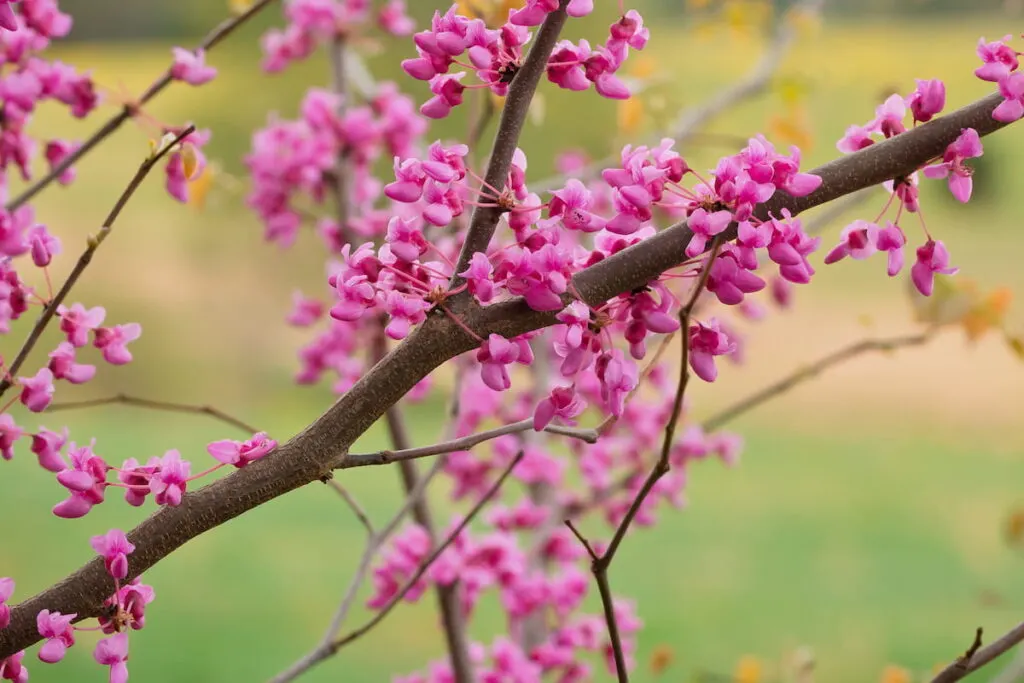
The Eastern Redbud is a small flowering tree that blossoms from spring until summer, producing flowers with dark magenta and pink color schemes.
Like the Magnolias, the flowers of the Eastern Redbuds appear on the trees before its leaves.
These pea-shaped rosy-pink flowers produce an elegant cluster around the Redbud trees.
The branches grow in different directions giving the tree a unique look. The Eastern Redbud tree also has several pink flowers growing on its trunk.
The Eastern Redbud trees are well known for their pink flowers, although some other species are known to blossom with white flowers.
The Eastern Redbud grows around 20-30 feet tall and has a width of about 33 feet. For a garden, the Ace of Hearts variety would be a great choice as it grows up to 9 feet tall.
Redbuds are found in USDA growing zones 5-9.
4. Pink Trumpet Tree
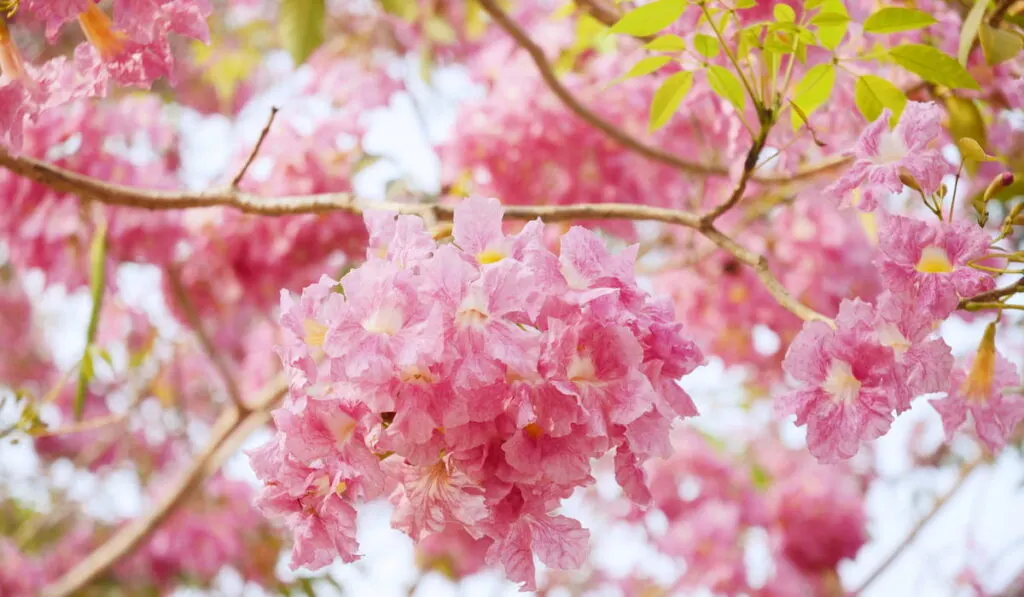
A semi-deciduous tree, the Pink Trumpet has a large cluster of pink blossoms. All through the year, this tree can stay green when grown in tropical climates.
The petals of the Pink Trumpet are delicate and yellow at the center.
When growing in clusters, the flower head of these trumpet-shaped flowers become bushy.
The spread of the branches makes the tree an elegant addition to any garden. The pink flowers of this tree can also serve as shade in the summer.
Pink Trumpet is found in USDA growing zones 5-9. The Pink Trumpet tree can tolerate frost in zones 9b through 10.
5. Persian Silk Tree

The Persian Silk tree, referred to as Mimosa, is well known for its fluffy fragrant white and pink flowers.
Flowers of the Persian Silk and trees of the Mimosa genus may look the same, but they have different genera.
The branches of the Persian Silk tree are long and well spread. They also have fern-like leaves drooping from them.
The white and pink flowers of this tree blossom from early summer until the middle of summer.
The flowers of the Persian Silk radiate a mild fragrance in the sun and are exquisite.
The pink stamen clusters measure around 1 inch long. These clusters create the powder-puff of flower heads that remain fluffy on green leaves.
Persian Silk trees are found in USDA growing zones 7-9. They are frost tolerant, but prolonged subzero temperatures can damage them. Also, the young plants may not be as tolerant as mature plants.
6. Dogwood Tree
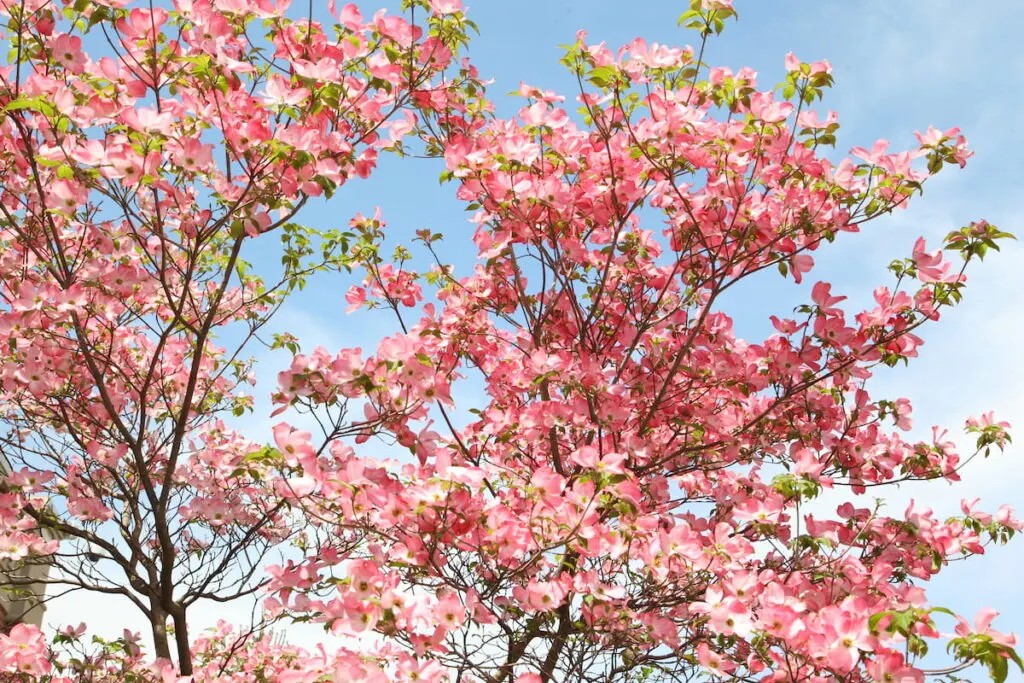
Dogwood trees usually have small red, pink, purple, and white flowers.
Dogwood flower petals are beautiful with an obovate shape that is tapered to a point. Some species produce star-shaped flowers, and each flower has a cluster of green and yellow stamen at the center.
The leaves of a Dogwood change into shades of burgundy and purple in the fall.
Dogwood trees require moist and well-drained soil. Dogwood trees are found in USDA growing zones 5-8, and some of them are frost tolerant in the lower zones.
7. Heaven Scent Magnolia
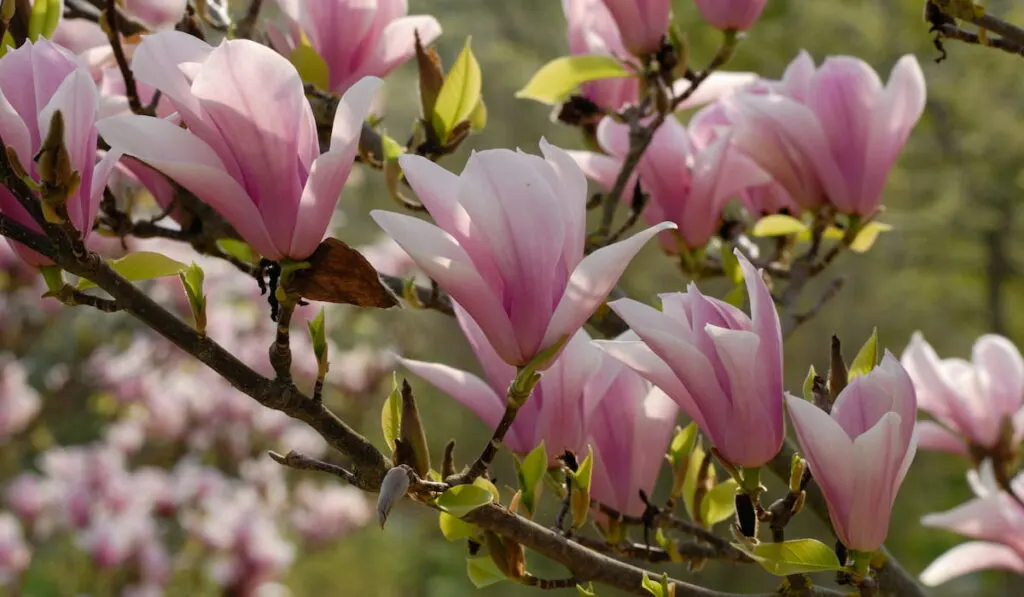
The name Heaven Scent Magnolia comes from the fragrance of its flowers.
The flowers of the Heaven Scent Magnolia have a pink base and become lighter toward the tips.
At maturity, the trees reach a height of 20 feet and can sometimes grow larger. Heaven Scent Magnolia is found in USDA growing zones 4-8.
Heaven Scent Magnolia thrive on light, acidic, and well-drained soil. Similar to other Magnolia, bees and birds find this tree attractive.
8. Oleander

Oleander is mostly seen as a tall shrub or a small tree that can reach a height of about 20 feet. This tree blooms from spring through and produces pink or white flowers.
Oleander trees are poisonous, so if you plan to add them to your garden, make sure you do not plant them around pets and children.
Oleander is found in USDA growing zones 8-10.
9. Weeping Cherry
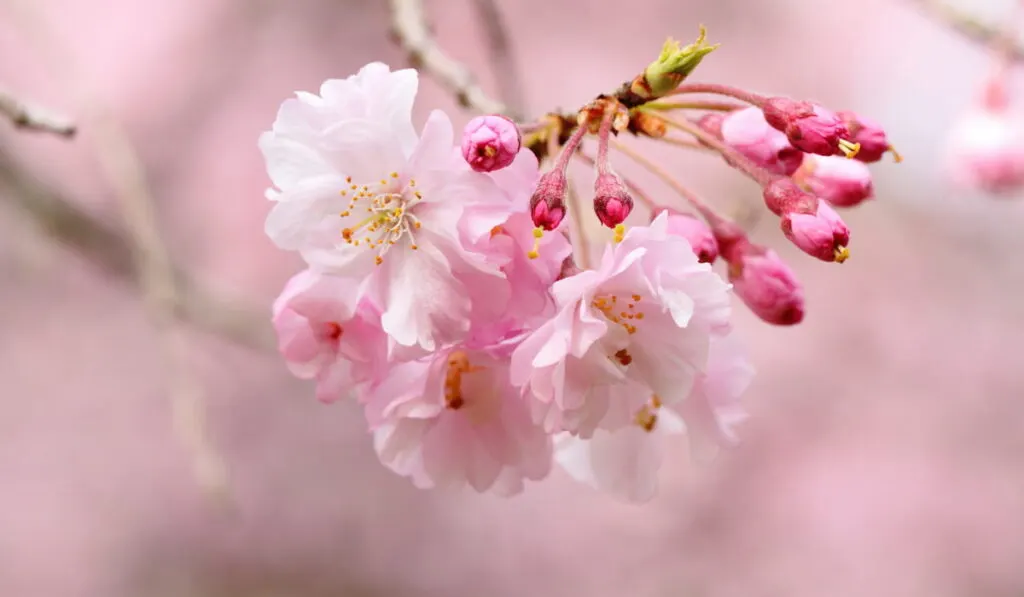
The Weeping Cherry is one of the many plants treasured in the spring.
It comes in several varieties, and the Weeping Higan and the Snow Fountains are some of the common types.
Weeping Cherry trees produce pink and white blossoms. The trees can be planted in groups or individually, as specimen trees.
They require moist soil to thrive, especially during periods of drought. Placing mulch 2 inches around the tree base should sustain the levels of moisture in the soil.
Weeping Cherry trees are found in USDA growing zones 4-8 although, this varies for different species. They can tolerate frost up to -10 F.
10. Crape Myrtle

Popular among many southerners, Crape Myrtle blooms for long periods, usually between the middle of summer to fall.
They produce flowers of various colors including red, white, and pink.
In northern regions, the Crape Myrtle is treated as a shrub.
It dies in winter but shows up again in spring. The Crape Myrtle grows as tall as 6-25 feet, and it can achieve taller heights in southern zones.
Excessive pruning should be avoided with Crape Myrtle trees, as it can lead to the emergence of suckers at the base. It can also lead to the death of the tree.
Crape Myrtle is found in USDA growing zones 6-9.
11. Purple-Leaf Sand Cherry

The Purple-Leaf Sand Cherry tree can be allowed to grow as a shrub or nursed into a tree.
As a tree or shrub, this plant can grow around 7-14 feet high.
The Purple-Leaf Sand Cherry is an ornamental tree that blossoms with light pink or white flowers in mid-spring.
In the summer, the long leaves of this tree become purple. But then, in spring, they turn reddish-purple in color.
Purple-Leaf Sand Cherry is found in USDA growing zones 2-8, and it is frost tolerant.
12. Kwanzan Cherries

Kwanzan Cherry tree has more of an upright form rather than a weeping form.
This tree produces white to light pink blossoms in the spring, offering a beautiful flower show.
It typically reaches heights of around 25-30 feet and can be planted as a street tree unlike some flowering trees. It requires moist and well-drained soil.
Kwanzan Cherries are found in USDA growing zones 5-8. It can tolerate frost up to -10 F.
13. Yoshino Cherries
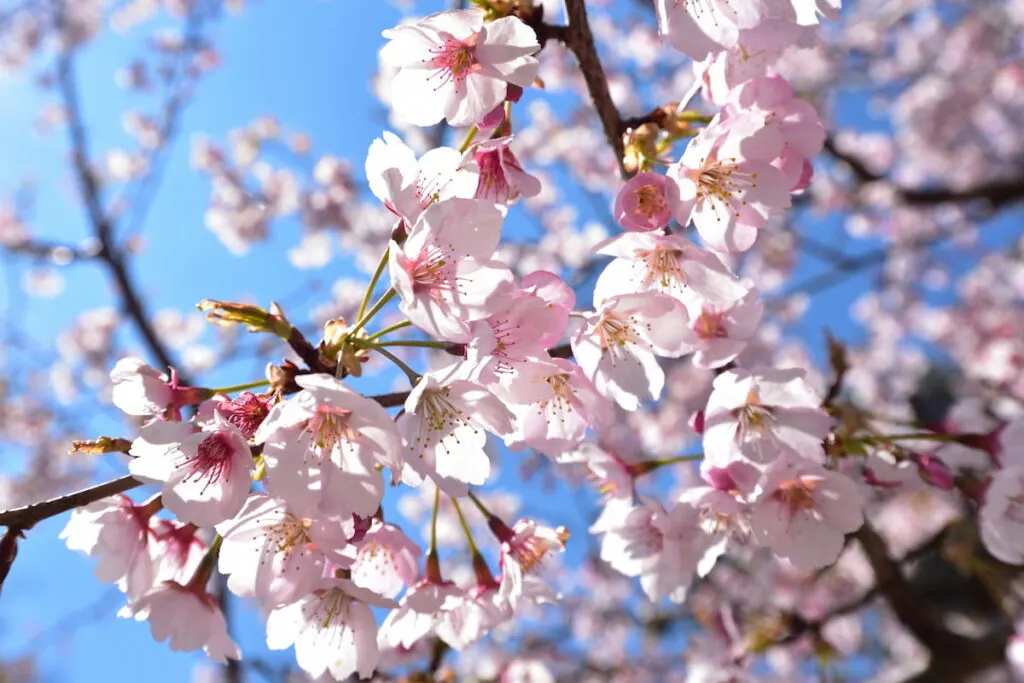
The Yoshino Cherry is larger than but similar to the Kwanzan Cherry. It grows as tall as 30-40 feet and has a spread similar to the Kwanzan Cherry.
Yoshino Cherries produce white to light pink blossoms and can be planted as a street or specimen tree just like the Kwanzan Cherry.
Yoshino Cherries require moist and well-drained soil and should have protection from heavy winds because of their brittle branches. They are found in USDA Growing Zones 5-8.
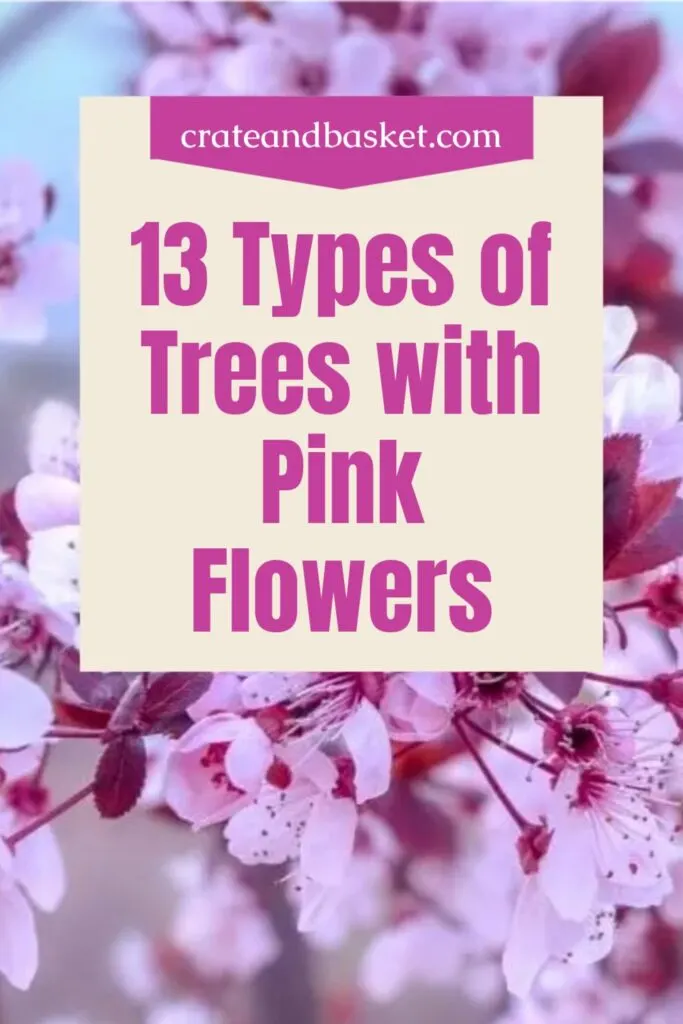
Resources
- https://leafyplace.com/flowering-trees/
- https://www.thespruce.com/types-of-flowering-trees-4069714
- https://www.thespruce.com/the-best-flowering-trees-4159968
- https://www.theland.com.au/story/4945102/now-is-magnolia-month
- https://www.fast-growing-trees.com/pages/flowering-cherries-guide
- https://www.cabi.org/isc/datasheet/4005
- https://home.howstuffworks.com/silk-tree.htm
- https://www.gardeningknowhow.com/garden-how-to/gardening-by-zone/zone-4/zone-4-dogwood-trees.htm
- https://gardeningsolutions.ifas.ufl.edu/plants/trees-and-shrubs/shrubs/oleander.html
- https://www.gardeningknowhow.com/ornamental/trees/tabebuia-trumpet-tree/tabebuia-tree-care.htm
- https://www.fast-growing-trees.com/pages/plant-care-weeping-cherry-tree
- https://www.gardeningknowhow.com/ornamental/trees/sand-cherry/purple-leaf-sandcherry-info.htm
- https://www.fast-growing-trees.com/pages/plant-care-kwanzan-cherry-tree
